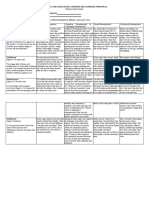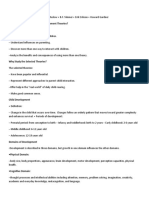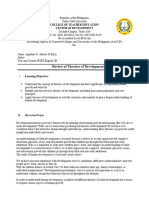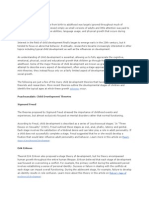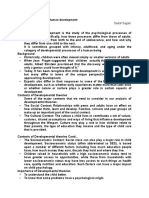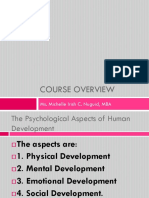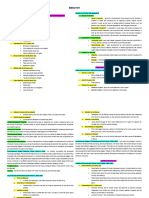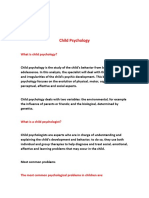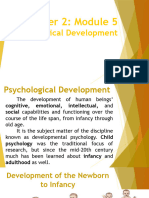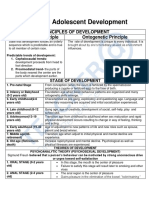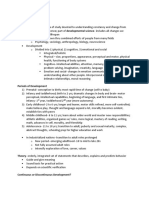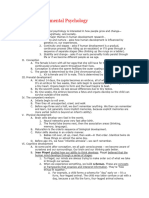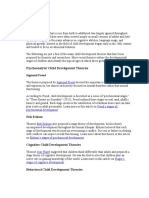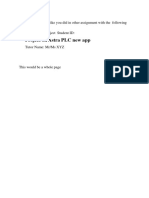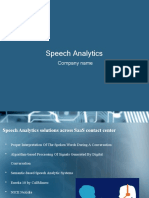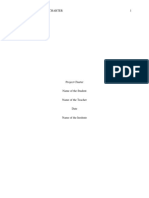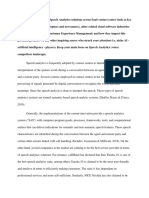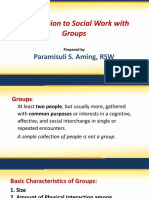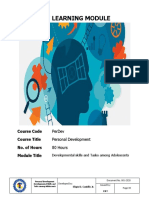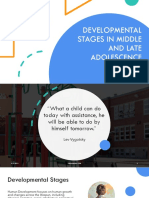0% found this document useful (0 votes)
26 views3 pagesOrder File Human Behaviour
This document discusses several theories of human development from childhood through adolescence. It describes how the brain develops most critically from ages 0-5, continues growing through adolescence, and reaches its maximum size around ages 12-14. Theories discussed include Piaget's stages of cognitive development, Erikson's psychosocial stages focusing on ego and identity, Bowlby's attachment theory, and Freud's psychosexual theory of controlling sexual and aggressive drives. The document aims to provide a framework for understanding how children develop into successful members of society through different stages explained by these theories of human growth.
Uploaded by
mohammad AliCopyright
© © All Rights Reserved
We take content rights seriously. If you suspect this is your content, claim it here.
Available Formats
Download as DOCX, PDF, TXT or read online on Scribd
0% found this document useful (0 votes)
26 views3 pagesOrder File Human Behaviour
This document discusses several theories of human development from childhood through adolescence. It describes how the brain develops most critically from ages 0-5, continues growing through adolescence, and reaches its maximum size around ages 12-14. Theories discussed include Piaget's stages of cognitive development, Erikson's psychosocial stages focusing on ego and identity, Bowlby's attachment theory, and Freud's psychosexual theory of controlling sexual and aggressive drives. The document aims to provide a framework for understanding how children develop into successful members of society through different stages explained by these theories of human growth.
Uploaded by
mohammad AliCopyright
© © All Rights Reserved
We take content rights seriously. If you suspect this is your content, claim it here.
Available Formats
Download as DOCX, PDF, TXT or read online on Scribd
/ 3


